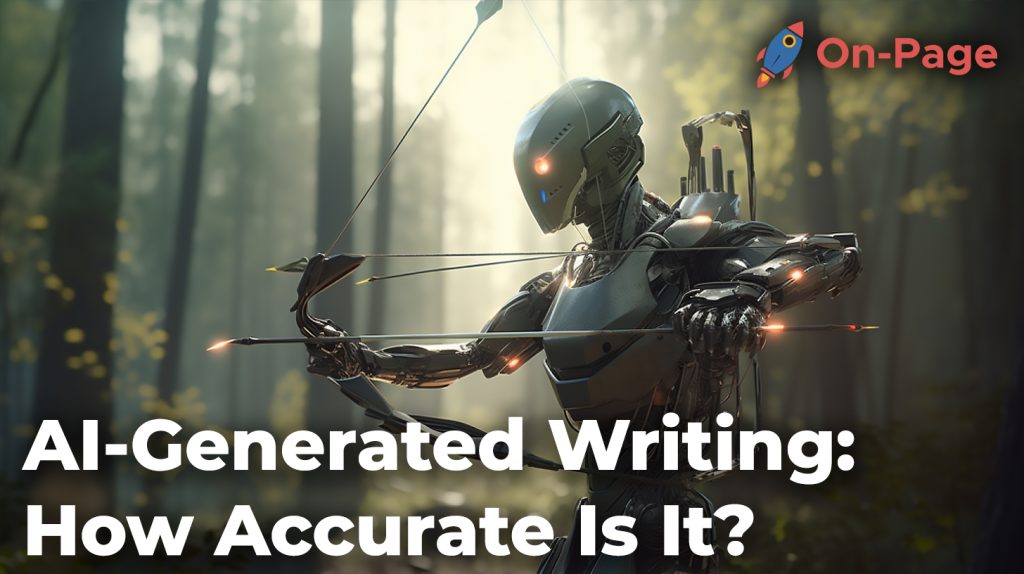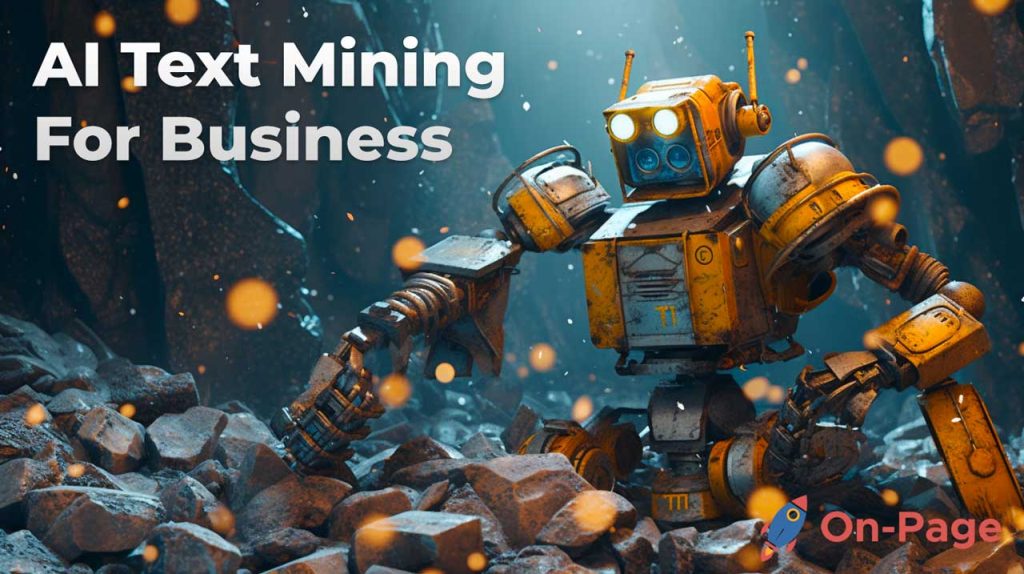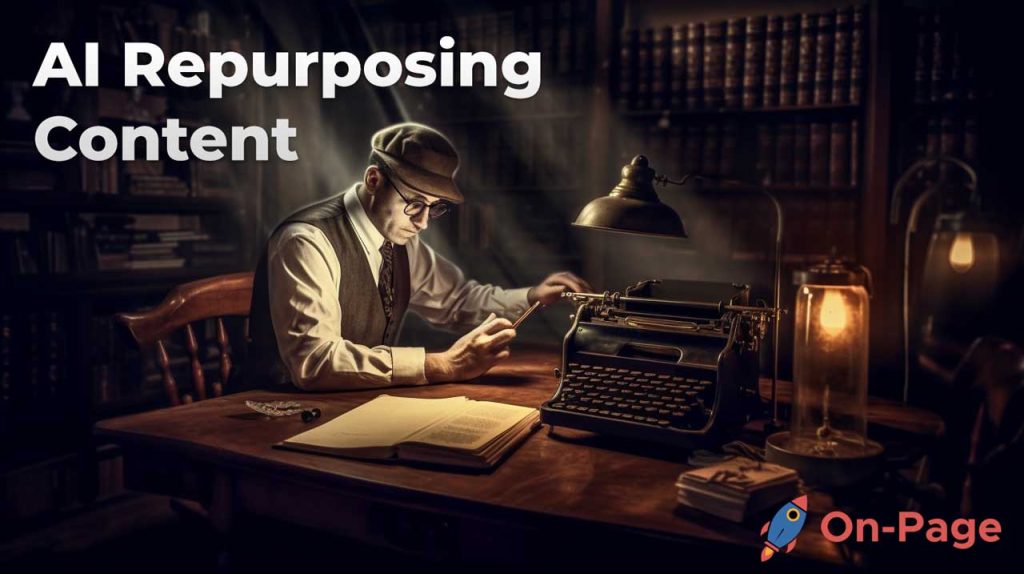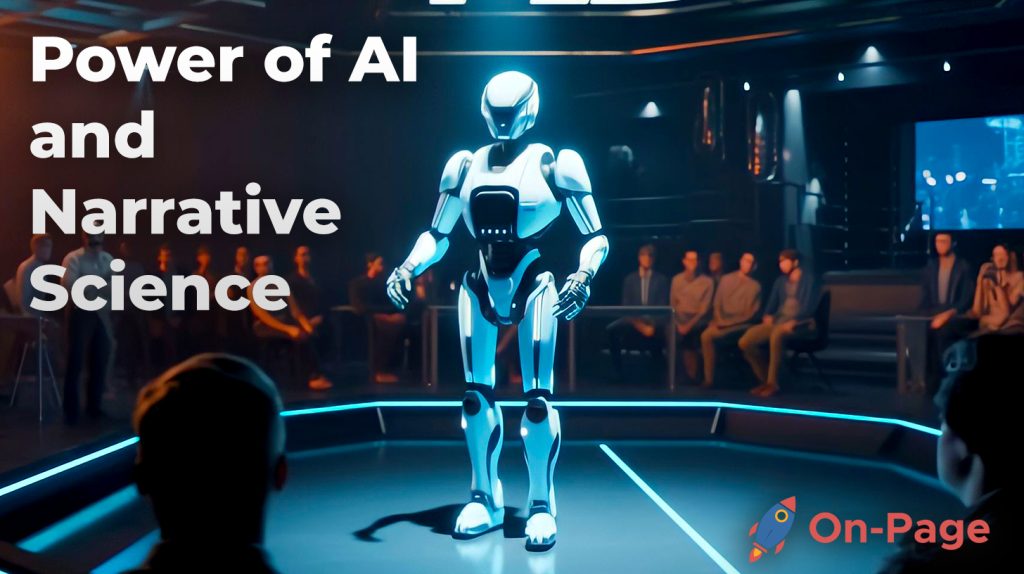
Think back to the days of cave paintings or ancient Egyptian hieroglyphs – those blurry, faded attempts to express thoughts and ideas. Now imagine living in an era where your ability to communicate depends on technology that can not only comprehend your thoughts but also convert them into engaging stories. Sounds futuristic, doesn’t it? Believe it or not, this dream-like possibility might be closer than you think. AI-generated writing with tools like On-Page.ai is becoming increasingly popular, but the million-dollar question remains: just how accurate is it? Our journey to reveal the true potential of AI-generated writing begins now – hold onto your keyboards!
The accuracy of AI-generated writing can vary depending on the text generator used, quality of data it was trained on, and other factors. While some AI-generated writing can be highly accurate, there is a risk of misinformation, plagiarism, and lack of creativity or personalization. It’s crucial to evaluate the credibility of AI-generated content by checking for repetition, errors, fact-heavy dry texts, and lack of personal experiences or opinions before publishing or using it.
Defining AI-Generated Writing
Artificial Intelligence (AI) is a rapidly growing technology, and its impact on various fields is undeniable. One particular area that has witnessed significant development is AI-generated writing. In simple terms, AI-generated writing refers to text created by machines using algorithms that mimic human thought processes. While the use of AI in writing might sound revolutionary, it is not a new concept. Researchers have been working on natural language generation (NLG) for decades. However, advancements in computer processing power and machine learning algorithms have made significant improvements to this technology.
AI-generated writing tools work similarly to other algorithm-driven applications like Google’s predictive search. These applications suggest accurate predictions of what users intend to search based on past searches by other users. Similarly, with NLG algorithms, the software simulates thinking processes used to produce human language like grammar rules and vocabulary while generating content based on structured data sets.
AI-generated writing can produce content at a much faster rate than humans can, allowing publishers and writers to churn out text faster than ever before. Additionally, AI-generated writing is more cost-effective compared to human-written content because machines can work tirelessly without rest and don’t require overtime pay or sick days.
If you’re looking to quickly and efficiently generate content using AI, On-Page AI should be your top choice. This cutting-edge content optimization tool crafts articles that are intended to educate and engage your target audience, resulting in higher online rankings and conversions. What’s great is that AI-content creation via On-Page.ai’s Stealth Writer can be accomplished in minutes, even seconds!
However, there are still open questions about how to preserve creativity and originality in the content generated by machines while dealing with the massive volumes of data that come from the internet.
To understand the accuracy of AI-generated writing, one must examine various factors that influence its effectiveness.
- AI-generated writing is a technology that uses algorithms to produce text that mimics human thought processes, allowing for faster and more cost-effective content creation. While advancements in computer processing power have made significant improvements to this technology, questions remain about how to preserve creativity and originality. To understand the accuracy of AI-generated writing, it’s important to consider various factors that influence its effectiveness.
Factors Influencing AI-Generated Writing Accuracy

Two primary factors influence the accuracy of AI-generated writing – training data quality and algorithm quality.
Training data
Training data refers to large volumes of structured information fed into machine learning algorithms to improve their outcomes over time continually. It can vary depending on factors such as genre, target audience, and language. Inaccurate or biased training data can negatively impact trained machine learning models, leading to biased content generation.
For instance, if an NLG algorithm’s training data only comprises Sports websites’ content, the program may not regenerate high-quality content during non-sport events like public health debates or economic crises.
Algorithm quality
Moreover, Algorithm quality is also crucial for generating accurate AI-written content. As with every software application, algorithms have their limitations since they’re code-based and dictated by a set number of rules. Additionally, writing has many nuances that can be challenging to program entirely into an algorithm. For example, humor or sarcasm is difficult to identify or generate in artificial systems since it requires semantic understanding beyond grammar rules and syntactical structure.
Thus, the algorithm’s ability to understand natural language is key for producing credible AI-authored pieces of content. Recent advancements in deep learning algorithms and neural networks allowed computers to better mimic humans’ thinking processes for more natural output.
As such, just like humans need years of education and experience to develop excellent writing skills, AI algorithms require continuous exposure to vast amounts of reliable data sets while using sophisticated programming techniques to get better over time.
Ultimately, improving AI-generated writing accuracy depends on the quality and amount of available structured data sets fed into machine learning models alongside updated, advanced algorithms powering the process.
As On-Page.ai uses a combination of advanced AI algorithms and NLP to understand the purpose of your content, it can generate accurate and useful articles. Since it’s also loaded with SEO features, the AI-generated articles are also optimized for better rankings and visibility. It’s undoubtedly a smart AI writer option if you want accuracy and efficiency!
Training Data and Algorithm Quality

The accuracy of AI-generated writing is largely a function of the quality of the algorithms used and the training data involved. As with many machine learning applications, the quality of the model directly correlates to the quality of the training data. Similarly, algorithmic manipulation can drastically alter the effectiveness of a given model. Here are a few key considerations when it comes to training and algorithm in AI-generated writing:
Data Quantity
As with many ML models, more data generally leads to better results. This is especially true in language modeling where exposure to a wide corpus helps give models context and nuance necessary for effective text generation. For instance, GPT-3 by OpenAI, one of the most advanced language models on the market to date, was trained on an enormous body of text from sources such as Wikipedia and Reddit. The result is that it is capable of generating human-like responses to written prompts.
Data Quality
While quantity clearly matters in terms of training data, but quality is arguably more important. In other words- garbage in equals garbage out (GIGO). To effectively train an AI language model, we must ensure that what we feed into it is accurate, unbiased, and appropriate. This can mean technical adjustments like removing stop words or using tokenization techniques, but it also requires careful consideration around avoiding harmful or offensive content.
Algorithm Quality
Once trained on high-quality data sets, these AI language models require equally sophisticated algorithms to be effective at creating content. Many use multiple recurrent neural networks (RNNs) stacked on top of each other. These RNNs work together to predict subsequent words based on previous context. However, even small changes to this basic architecture can significantly impact results
In all these factors related to training data, its quantity and/quality does play a major part in determining the accuracy of AI-generated writing. But it intersects with another vital element- the growth of advanced language models and techniques.
Advanced Language Models and Techniques
Beyond data quality, another factor influencing the accuracy of AI-generated writing includes model architecture from Vanilla-LSTM (Long Short-Term Memory) used in popular deep learning applications to state-of-the-art GPT-3’s 175 billion parameters. These advanced language models offer more nuanced tools under the hood for text generation algorithms. Here are some key things to consider when evaluating the effectiveness of AI models:
Language Context
One significant ability these models offer is a deep understanding of context at various levels- words, sentences, paragraphs, documents, etc., which play an important role in language modeling. As a result, these sophisticated models can account for even small nuances in phrasing or diction that might have implied meanings beyond what they mean on their faces.
Attention Mechanism
Recent advancements in deep learning algorithms include attention mechanisms that allow for parsing out relevant information from complex inputs. Simply put- these mechanisms help direct the AI’s focus on only certain parts of text data sets, allowing it to interpret and process certain phrases as being more meaningful than others when generating its output.
Bias and Prejudice
Another important consideration is whether these advanced language models perpetuate existing biases and prejudices in text data sets or create new ones. This is particularly concerning given the fact that many NLP models (both academic and industrial) remain problematic when it comes to dealing with marginalized groups, likely due to training data choices or algorithmic biases. However, if implemented correctly – with special consideration given to dataset quality and representative sizing – these problems could be mitigated.
In conclusion– while there is still much work to be done when it comes to creating accurate AI-generated content using machine learning applications for language modeling, the key elements of data quality and model architecture offer a promising foundation for continued growth. As always, we remain optimistic about the future of these techniques and look forward to seeing how they will help shape the next generation of AI language modeling algorithms.
Evaluating AI-Generated Writing Accuracy

Evaluating the accuracy of AI-generated writing is essential to determine whether it can live up to its promises. The main challenge with evaluating AI-generated text is that there are no clear-cut metrics to measure its accuracy. However, certain criteria can be used as a basis for analyzing the output.
Coherence
One such criterion is coherence, which refers to how well-organized and logically structured the text is. Coherent text should flow smoothly from one sentence to the next, with logical transitions and clear connections between ideas.
Grammatical correctness
Another important factor is grammatical correctness, which involves proper sentence construction, grammar rules, syntax, and punctuation. Grammarly‘s proofreading tools are an excellent example of how AI can help improve grammatical accuracy in writing.
Note that the Stealth AI Writer has a built-in grammar and spell checker so you can rest assured it only produces grammatically correct content pieces. No room for annoying typos and grammar blunders!
Factual accuracy
Finally, factual accuracy is critical in determining whether an AI-generated text provides accurate information. For instance, when generating news headlines or medical reports, any errors in factual accuracy could have serious consequences.
A recent study by Gartner found that by 2024, 75 percent of all enterprise content will be generated by machines. Companies using these tools need to ensure that the content produced aligns with their brand’s voice and values while providing accurate information. Many businesses are already leveraging this technology to boost their content marketing efforts.
However, evaluating AI through quantitative methods such as word count and readability scores may not be enough since it does not consider other factors like tone and style, creative expression, and nuance which are generally subjective.
This limitation was highlighted when Microsoft launched TayBot on Twitter. TayBot was an AI-powered chatbot designed to learn from human conversations and respond accordingly. However, within hours after its launch in March 2016, users began training TayBot on how to make sexist, racist comments that got it suspended within just a few hours.

Therefore companies must always stay vigilant over how these systems are programmed and intervene when codes are being misused to produce biased writing or showcase hate crimes.
Now that we understand how to evaluate AI-generated writing, let’s take a closer look at its effectiveness through a series of case studies.
Case Studies and Effectiveness Tests
Several case studies have examined the effectiveness of AI-generated writing. Here are some of the most prominent examples:
1. The Associated Press (AP) has been using Automated Insights’ Wordsmith platform since 2014 to generate thousands of quarterly earnings reports. Wordsmith analyzes data from financial statements and uses natural language generation to create reports for AP. According to the company, automated reporting has increased the number of stories AP produces from 300 to over 4,400 stories per quarter.
2. Forbes partnered with a startup called Narrative Science to develop an automated news-writing tool called Quill. Quill mines data from earnings reports and generates articles on trends in industries such as pharmaceuticals and technology. Forbes’ leadership sees it as “a way for the publication to transform its business in the face of declining ad revenue.” However, they also note that their human writers can provide value by “adding color” and analysis is not detectable from data alone.
3. Google’s BERT algorithm is an advanced natural language processing (NLP) technique that can analyze text much more like humans do. In one test, Google used BERT to summarize long-form content into short snippets displayed at the top of search results pages. According to Google, using BERT resulted in more accurate summaries that better matched user intent, substantially improving click-through rates.
While these case studies show promising results, they also raise questions about whether machines will eventually replace human writers altogether. Some experts say that while AI-generated content may be useful for routine tasks like news reporting or corporate communications, it cannot yet replicate human creativity or critical thinking.
This is because AI is very good at performing specific, repetitive tasks but not as effective at flexible problem-solving. It’s like playing chess. Machines can beat even the best human players, but only by analyzing all possible moves and outcomes in a way that isn’t possible for humans to do. Yet, playing chess well involves more than strategy: there is an element of intuition, imagination, and creativity. In writing too, AI-generated content may satisfy the reader on some level with its competency but it lacks that special human touch.
Although, with the right AI writing tool like the Stealth Writer, it can come in handy in creating accurate, non-robotic content. Its AI-generated content is arguably even better than human-written!
Finally, with the rise of AI-generated writing, what does this mean for writing as a profession? We will explore this question in greater detail in our next section.
- According to a research study conducted by OpenAI in 2020, their model GPT-3 achieved an accuracy rate of up to 50% on tasks that involve generating coherent paragraphs based on specific prompts.
- Turnitin‘s new tool, which detects AI-generated writing, claims a 98% accuracy rate in identifying content created using artificial intelligence (AI) systems like ChatGPT.
- A survey conducted among college professors in 2022 revealed that nearly 40% of them are concerned about the potential for AI-generated content to contribute to cheating and plagiarism in academic assignments.
Impact on Writing and Future Implications

AI-generated writing has disrupted the traditional landscape of writing, whether in academic or creative writing, journalism, or advertising. There are concerns that while AI may increase productivity and reduce costs, it may also diminish quality, creativity and originality. It is important to weigh these potential implications, both positive and negative before one can draw conclusions about AI-generated writing.
On the positive side, AI-generated writing can be used to automate repetitive tasks such as product descriptions, news reports, sports recaps, and financial forecasts. It can also generate technical manuals and summaries for academic journals. This streamlines the workflow of writers by reducing time spent on mundane tasks. Moreover, using AI-generated summaries lets readers decide quickly if an article is worth reading.
If your content marketing strategy is suffering badly from low engagement and poor rankings, then it’s time to consider other alternatives like AI-generated content. On-Page.ai content optimization tool just might be what you need to improve your content game.
However, there are downsides too. AI-generated content risks missing voice consistency if written using multiple platforms’ algorithms. Since it’s often only as good as its training data and algorithms look for keywords rather than context . This leads to run-of-the-mill content that lacks originality, creativity or unique perceptions.
Additionally, AI-generated content has ethical issues tied to plagiarism – a writer could accidentally use paragraphs from AI-generated content without giving credit where credit is due. Thusly, proving who owns what by generating (or using) machine learning models that determine the likelihood of similarity between texts with humans asserting authorship might become part of a writer’s responsibilities in the near future.
The question arises whether AI will replace human writers entirely. While some think this could be the case in fields already inundated with repetitive work like sports reporting or earnings announcement analyses, most believe a computer program cannot easily replicate human qualities like imagination or inventiveness required for narrative storytelling or essay-style writing.
An analogy… To envision the future of writing with AI let’s consider the development of automobiles. Before the early 20th century, horses were the primary mode of transportation. Transitioning from horse-drawn carriages to the automobile changed many aspects of life, and people had to adapt to these changes. Similarly, the rise of AI-generated writing will require a period of adaptation for writers and readers alike.
Future implications are profound – the need for writers who can create engaging, risky and emotional stories might decline in markets where companies adopt algorithmic copywriting methods; on the other hand, in areas where creativity is appreciated and valued, writers remain important assets.
To sum up, AI-generated writing has both positive and negative effects on writing. Its impact is dependent on whether it augments or replaces human writing. In evaluation processes, we must weigh its potential benefits in terms of cost-saving, increased productivity and more efficient content creation against possible risks of reduced creativity, lack of originality, plagiarism risk and ethical issues.
Regardless if you’re an enthusiast or skeptic about AI-generated writing’s future prospects in writing, let me share that On-Page.ai leads a forceful pathway towards developing AI technology where quality never gets compromised.
Their deep learning architecture ensures higher-level cognitive functions like writing style standards are executed accurately by considering semantic analysis and themes rather than quick fixes like keyword stuffing. With their comprehensive SEO tools at your disposal means marketers can generate compelling articles without fear of penalization from Google’s algorithm update models hence securing valuable reach through better SERP rankings.
Let’s get you set up today with On-Page so you can start producing high-quality, accurate AI-generated content that your potential customers will love.




